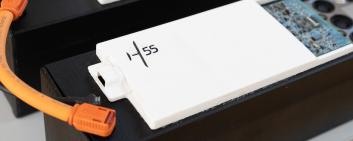Increasing the power conversion efficiency of solar cells is important for two reasons. In the long run, it is the most effective way to reduce the levelized cost of electricity. In the short term, it is the best way to promote photovoltaics for applications where space is limited, such as roofs, facades, vehicles, or even drones.
However, all solar cells are fundamentally limited by the materials they are made from, which in turn affects the efficiencies they can achieve. The most adopted solar cell technologies to date are made with silicon. But despite silicon’s success, it has a theoretical efficiency limit of around 29%. Current efficiencies for this technology stand slightly below 27%, leaving a very small margin for future efficiency gains.
In the innovative race to exceed this limitation, scientists have added one (or more) complementary solar cell(s) to silicon to form “tandem” solar cells. The higher-energy visible light of the sun is absorbed in the top cell, while the lower-energy infrared light is absorbed in the silicon cell placed at the rear of the tandem.
Researchers from the CSEM and the EPFL PV-lab in Neuchâtel have succeeded in improving the efficiency of two kinds of perovskite-on-silicon tandems. They adapted materials and fabrication techniques to deposit high-quality perovskite layers from solution on a planarized silicon surface, reaching a power conversion efficiency of 30.93% for a 1 cm2 solar cell.
Then, by working on a new version of a hybrid vapor/solution processing technique compatible with textured silicon surfaces, they have produced a solar cell with a power conversion efficiency of 31.25% (again on 1 cm2).
Double world record success and new perspectives for the future of PV
These results constitute two new world records: one for the planar and one for the textured device architecture. The latter approach provides a higher current and is compatible with the structure of current industrial silicon solar cells. EPFL’s and CSEM’s new records were independently certified by the National Renewable Energy Laboratory (NREL) in the United States.
“The 30% efficiency mark had already been achieved with other types of materials, namely III-V semiconductors. However, these materials and the processes used to make them are too expensive to sustain the energy transition – these devices are a thousand times more expensive than silicon solar cells. Our results are the first to show that the 30% barrier can be overcome using low-cost materials and processes, which should open new perspectives for the future of PV,” commented Christophe Ballif, Head of the EPFL Photovoltaics Laboratory and CSEM’s Sustainable Energy Center.







